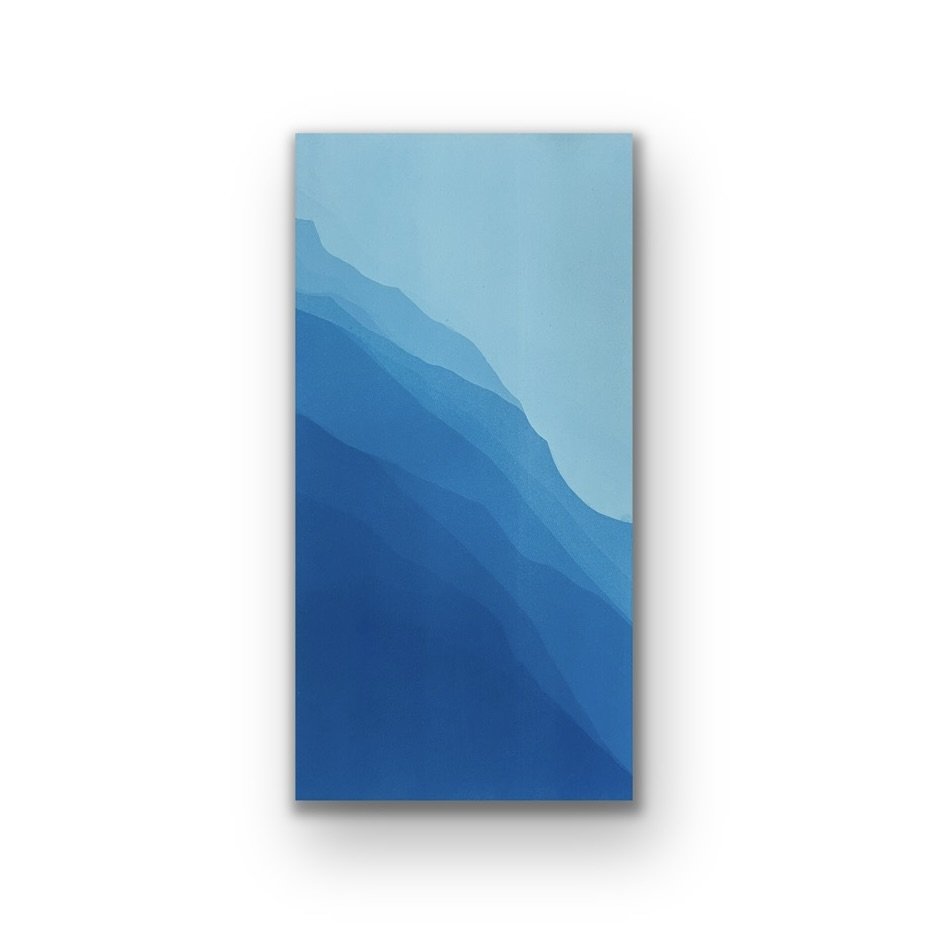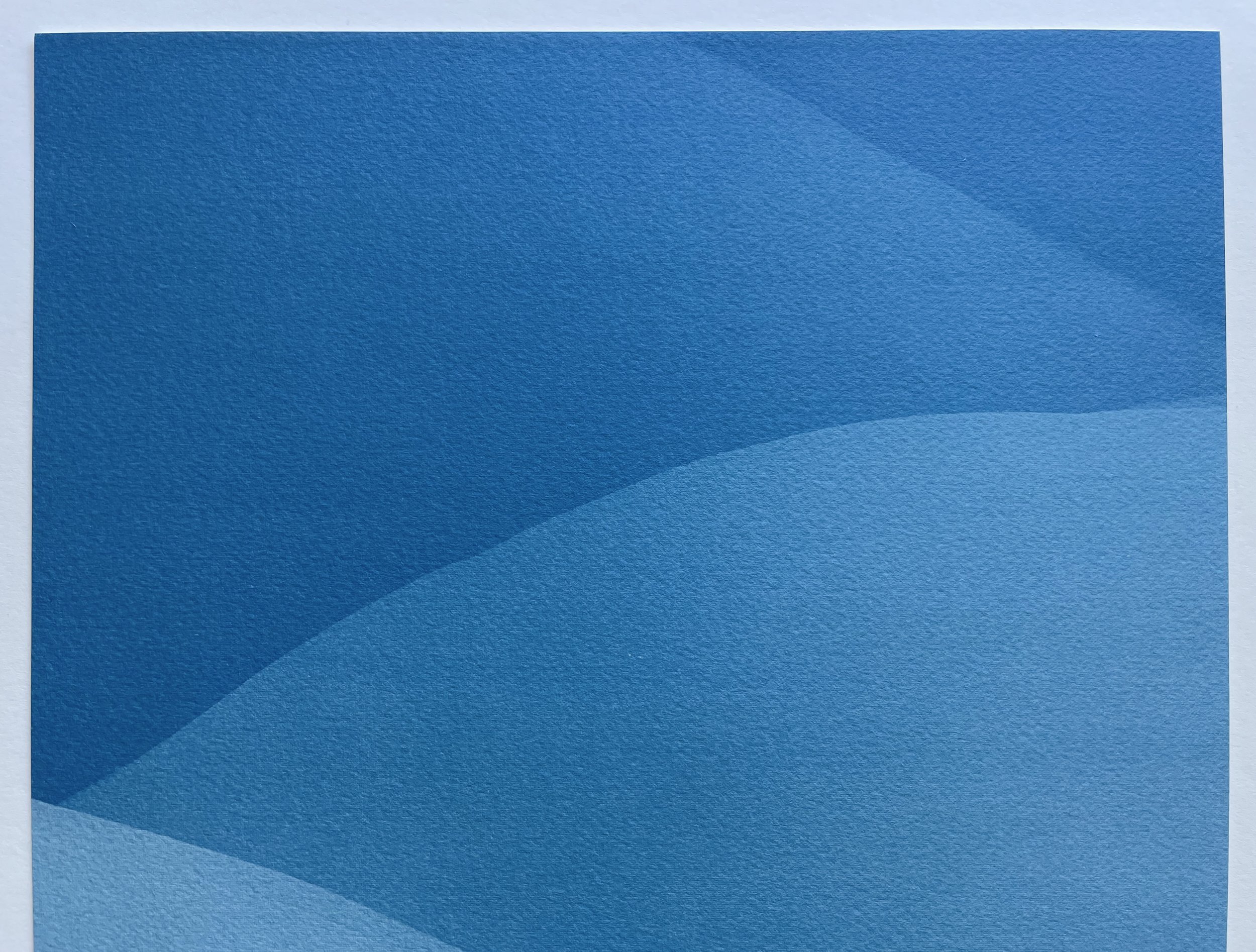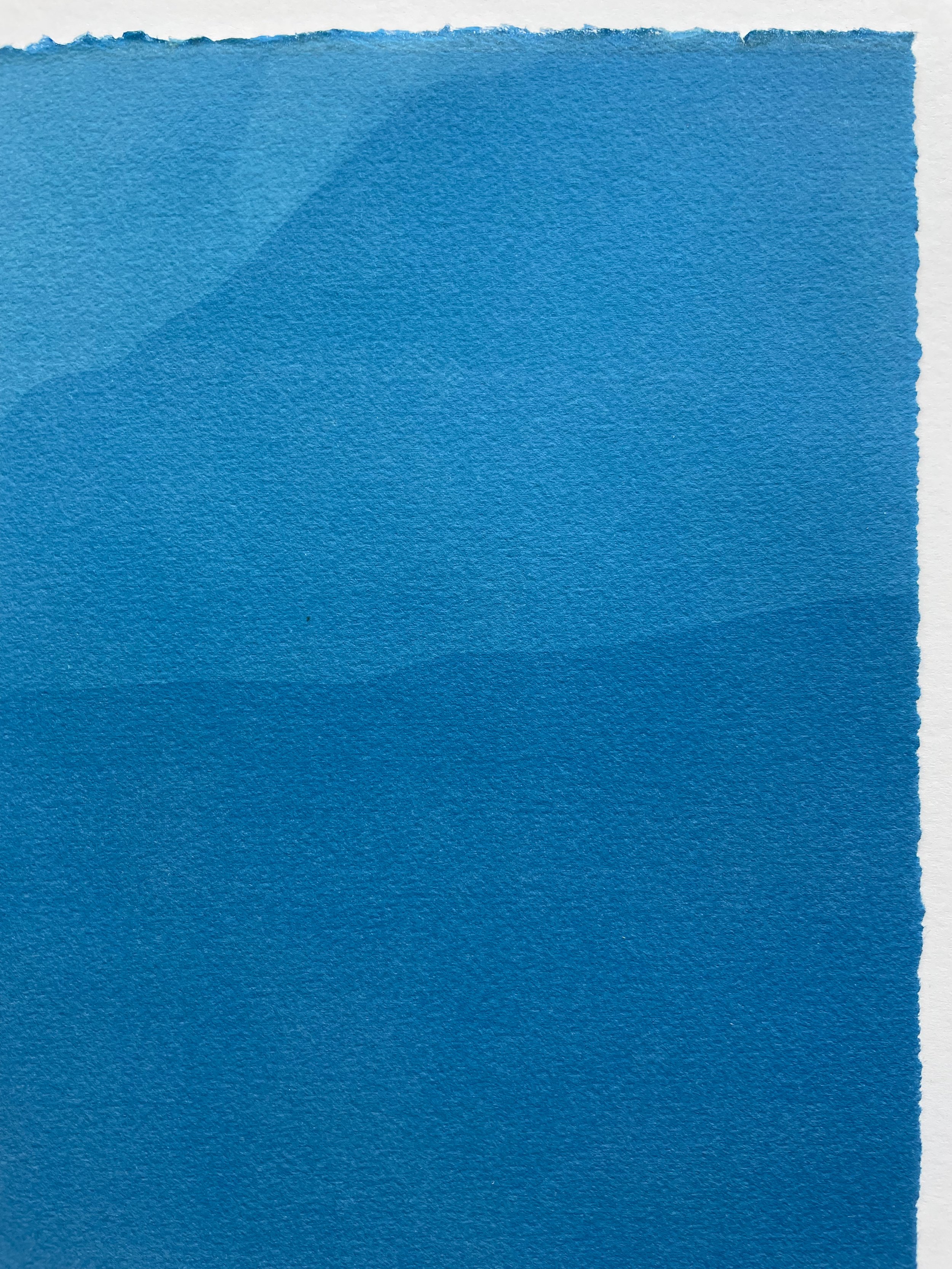 Image 1 of 6
Image 1 of 6

 Image 2 of 6
Image 2 of 6

 Image 3 of 6
Image 3 of 6

 Image 4 of 6
Image 4 of 6

 Image 5 of 6
Image 5 of 6

 Image 6 of 6
Image 6 of 6







Sea Cliffs 4 (25 x 15 inches FRAMED. ONE Original abstract cyanotype on paper)
25 x 15 inches FRAMED in a slim 3/8 inch white metal gallery frame with a 1.5-inch mat border.
Together with its partner which is SOLD SEPARATELY for an additional $350, they would measure 25 h x 30 wide or 25 h x 32 wide with a 2-inch gap between them.
Though this monotype resembles a watercolor painting or an aquatint etching, it is actually a form of photography called a cyanotype, photogram or sun print. What you see is a multiple-exposure lensless photograph.
My technique is a form of experimental photography which may include tiny splashes from where water washed off the photo chemicals before it darkened and turned blue. Each abstract cyanotype is entirely unique. These exact lines, shapes and shades of blue cannot be recreated as the exposure of the paper was heavily manipulated by me during each printing.
A traditional single-exposure cyanotype yields a white silhouette against a dark blue background. But instead of creating a white image by blocking light with solid objects on the light-sensitive paper, I used water to block the light, creating subtle gradations of darkening blue as I submerged the light-sensitive paper for different carefully timed exposures under water.
Note: any tiny white ones are not scratches or damage to the artwork but actually the gaps between the bristles of the paintbrush used to apply the light sensitive chemicals in darkness. working in darkness it is impossible to see where the brush has already passed until the paper is exposed to light days later and it turns blue.
25 x 15 inches FRAMED in a slim 3/8 inch white metal gallery frame with a 1.5-inch mat border.
Together with its partner which is SOLD SEPARATELY for an additional $350, they would measure 25 h x 30 wide or 25 h x 32 wide with a 2-inch gap between them.
Though this monotype resembles a watercolor painting or an aquatint etching, it is actually a form of photography called a cyanotype, photogram or sun print. What you see is a multiple-exposure lensless photograph.
My technique is a form of experimental photography which may include tiny splashes from where water washed off the photo chemicals before it darkened and turned blue. Each abstract cyanotype is entirely unique. These exact lines, shapes and shades of blue cannot be recreated as the exposure of the paper was heavily manipulated by me during each printing.
A traditional single-exposure cyanotype yields a white silhouette against a dark blue background. But instead of creating a white image by blocking light with solid objects on the light-sensitive paper, I used water to block the light, creating subtle gradations of darkening blue as I submerged the light-sensitive paper for different carefully timed exposures under water.
Note: any tiny white ones are not scratches or damage to the artwork but actually the gaps between the bristles of the paintbrush used to apply the light sensitive chemicals in darkness. working in darkness it is impossible to see where the brush has already passed until the paper is exposed to light days later and it turns blue.
25 x 15 inches FRAMED in a slim 3/8 inch white metal gallery frame with a 1.5-inch mat border.
Together with its partner which is SOLD SEPARATELY for an additional $350, they would measure 25 h x 30 wide or 25 h x 32 wide with a 2-inch gap between them.
Though this monotype resembles a watercolor painting or an aquatint etching, it is actually a form of photography called a cyanotype, photogram or sun print. What you see is a multiple-exposure lensless photograph.
My technique is a form of experimental photography which may include tiny splashes from where water washed off the photo chemicals before it darkened and turned blue. Each abstract cyanotype is entirely unique. These exact lines, shapes and shades of blue cannot be recreated as the exposure of the paper was heavily manipulated by me during each printing.
A traditional single-exposure cyanotype yields a white silhouette against a dark blue background. But instead of creating a white image by blocking light with solid objects on the light-sensitive paper, I used water to block the light, creating subtle gradations of darkening blue as I submerged the light-sensitive paper for different carefully timed exposures under water.
Note: any tiny white ones are not scratches or damage to the artwork but actually the gaps between the bristles of the paintbrush used to apply the light sensitive chemicals in darkness. working in darkness it is impossible to see where the brush has already passed until the paper is exposed to light days later and it turns blue.





























